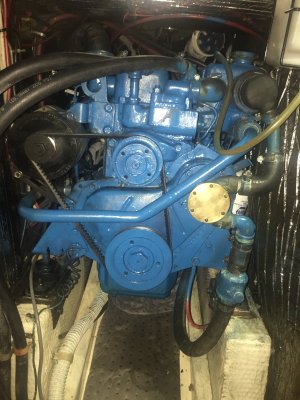Jon Westdal
New Member
Hello all,
First time poster here. My wife and I are looking to purchase a sailboat. Having sailed in a Morgan 34 from Fort Lauderdale to the BVI's, a life time ago, I have always had a soft spot for Morgans. We're looking, well were going to be looking when get done done wandering around Alaska, for a 382/83/84. I see that some have the 30hp Yanmar and some have the 48?hp Perkins. Does the Yanmar have the power for fight a strong current? I have to admit that having grown up rebuilding British iron I am more at home with the Perkins but what do those in the know think?
First time poster here. My wife and I are looking to purchase a sailboat. Having sailed in a Morgan 34 from Fort Lauderdale to the BVI's, a life time ago, I have always had a soft spot for Morgans. We're looking, well were going to be looking when get done done wandering around Alaska, for a 382/83/84. I see that some have the 30hp Yanmar and some have the 48?hp Perkins. Does the Yanmar have the power for fight a strong current? I have to admit that having grown up rebuilding British iron I am more at home with the Perkins but what do those in the know think?


